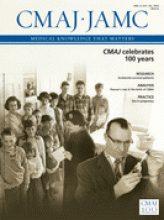The most commonly performed surgical procedure in the world — male circumcision — is done for therapeutic, prophylactic, religious, cultural and social reasons. Discussions of male infant circumcision for health reasons are always split. Proponents suggest there are significant potential health benefits including a decreased risk for some sexually transmitted infections, a decrease in HPV-related penile cancer and reduced phimosis, paraphimosis.1 On the other hand, opponents comment on the complication rate of 1.5%1,2 and only modest benefits, while noting that it is a painful procedure for neonates with possible long-lasting effects such as lowering the threshold for pain,2 and that it is based on tradition not evidence.2
For more than a decade, the American, Canadian and Australian pediatric specialists organizations have not recommended routine infant circumcision, noting that the existing evidence was insufficient to support it. Each of these organizations regularly reviews its guideline statements to determine if positions need to be updated. The question now is whether the findings from the randomized trials of adult male circumcision in sub-Saharan Africa that show circumcision halves the risk of acquiring HIV and decreases risk for HSV-2, and high-risk HPV in heterosexual African adult men3 push these organizations to change their positions on routine infant circumcision.
The Paediatrics & Child Health Division of the Royal Australasian College of Physicians was the first back with its review (September 2010) and said no to routine male infant circumcision.4 Should Canadian and American pediatric specialty organizations change their positions?
As is the case with Australia,4 it’s not clear how relevant these African studies are for Canada and other low HIV prevalence countries. All the sub-Saharan studies were conducted in countries with a high HIV prevalence. Even at baseline the study populations had an HIV incidence of 1.3%; Canada’s baseline incidence is 0.013%. A recent analysis in the United States estimated that neonatal circumcision would only reduce the 1.87% lifetime risk of HIV among all males by about 16%.5
Second, none of the sub-Saharan African studies examined infant circumcision; all involved adult male circumcision. There is no new evidence that infant circumcision provides any added benefit to the neonate, infant or young child with respect to HIV and HPV protection. The potential benefit from circumcision only begins to accrue when the male becomes sexually active.

Image courtesy of © 2011 Jupiterimages Corp.
Thus the important question for these pediatric societies is not about a change in infant circumcision recommendations, but rather the need to address whether there would be merit in routine peripubertal male circumcision.
The evidence for risks and benefits of circumcision in this age group has not been assessed in the same rigorous manner as those for infant circumcision. Modelling of potential benefits and cost-effectiveness studies would also need to be done. For example HPV vaccine for males in this age group might be a better strategy for prevention of HPV than circumcision.
Some adult males may squirm at the very thought of routinely offering circumcision to peripubertal males, possibly because of perceived pain and discomfort. But infant circumcision also causes pain and discomfort.2,4 Indeed it’s curious that a painful elective procedure of no major benefit to the infant until years later would ever be deemed more acceptable than the same procedure for a peripubertal boy.
The adolescent scenario would also have an additional advantage: the opportunity for informed choice by the proposed recipient of the procedure. The boy can give assent, while a neonate cannot. As well, this would provide a prime opportunity to discuss other ways to decrease risk of sexually transmitted infections whether or not the peripupertal male agreed to be circumcised.
Extrapolating from Australia’s decision, the African adult HIV circumcision prevention data are unlikely to lead to a major change in the negative position on routine infant circumcision held by both the Canadian or American specialty organizations. But the time has come for all three organizations to offer evidence-based guidance on peripubertal circumcision. Should circumcision be routinely offered to young male adolescents rather than their baby brothers? That is the more medically important question.











